Blog
Top 10 Ingredients to Avoid in Shampoo for Healthier Hair
The quest for healthier hair has led many consumers to scrutinize the ingredients in their hair care products. Among these, shampoos play a pivotal role in cleansing and maintaining the health of our hair. However, not all shampoos are created equal. Many contain ingredients that can be harmful or irritating to the scalp and hair follicles, ultimately compromising the health and appearance of our locks.
In this comprehensive guide, we’ll explore the top 10 ingredients to avoid in shampoo if you’re seeking healthier, more vibrant hair. From harsh sulfates to synthetic fragrances, we’ll delve into the potential risks associated with these common shampoo ingredients and provide alternatives for safer, more natural hair care solutions.
1. Sodium Lauryl Sulfate (SLS) and Sodium Laureth Sulfate (SLES):
Sulfates are surfactants commonly found in shampoos due to their ability to create a rich lather and effectively remove dirt and oil from the hair. However, both Sodium Lauryl Sulfate (SLS) and its milder counterpart, Sodium Laureth Sulfate (SLES), can strip the scalp of its natural oils, leading to dryness, irritation, and even hair breakage over time.
Alternatives: Look for sulfate-free shampoos that utilize gentle cleansing agents such as coconut-derived surfactants or natural soapwort extract.
2. Parabens:
Parabens are synthetic preservatives used to prolong the shelf life of cosmetic products, including shampoos. Despite their effectiveness in preventing microbial growth, parabens have been linked to hormone disruption and potential carcinogenicity. They can also irritate the scalp and contribute to allergic reactions in sensitive individuals.
Alternatives: Opt for paraben-free shampoos preserved with natural alternatives like vitamin E, grapefruit seed extract, or rosemary extract.
3. Silicones:
Silicones are often added to shampoos and conditioners to impart a smooth, shiny appearance to the hair by forming a waterproof coating around each strand. While silicones can provide temporary benefits in terms of detangling and frizz control, they can also weigh down the hair and create buildup over time, leading to dullness and decreased manageability.
Alternatives: Choose silicone-free shampoos that rely on nourishing oils like argan oil or jojoba oil to moisturize and protect the hair without causing buildup.
4. Synthetic Fragrances:
Many shampoos contain artificial fragrances to enhance their scent and appeal to consumers. However, these synthetic fragrances are often composed of a complex mixture of chemicals, some of which may be allergenic or irritating to the scalp. Prolonged exposure to synthetic fragrances can also trigger headaches, respiratory problems, and other adverse reactions.
Alternatives: Select fragrance-free or naturally scented shampoos that utilize essential oils or botanical extracts for a pleasant aroma without the risk of synthetic fragrance-related side effects.
5. Formaldehyde and Formaldehyde-Releasing Agents:
Formaldehyde and its releasing agents, such as quaternium-15 and DMDM hydantoin, are used in some shampoos as preservatives or to help maintain product consistency. However, these compounds are known carcinogens and can cause skin irritation, allergic reactions, and respiratory issues upon prolonged exposure.
Alternatives: Look for formaldehyde-free shampoos preserved with safer alternatives like phenoxyethanol or ethylhexylglycerin.
6. Phthalates:
Phthalates are a group of chemicals commonly used as plasticizers in various consumer products, including shampoos and other personal care items. They can help enhance the flexibility and durability of plastics, but they have also been linked to endocrine disruption, reproductive toxicity, and adverse effects on fetal development.
Alternatives: Choose phthalate-free shampoos formulated with natural thickeners and emollients such as guar gum or xanthan gum.
7. Synthetic Colorants:
Artificial colorants are often added to shampoos to enhance their visual appeal and create vibrant hues. However, many synthetic dyes contain coal tar derivatives and other potentially harmful chemicals that can cause scalp irritation, allergic reactions, and even skin sensitization with repeated use.
Alternatives: Opt for shampoos that use naturally derived colorants, such as fruit extracts or plant-based pigments, to achieve subtle tints or maintain the natural color of the hair without the need for synthetic dyes.
8. DEA (Diethanolamine), MEA (Monoethanolamine), and TEA (Triethanolamine):
DEA, MEA, and TEA are ethanolamines commonly used in shampoos as emulsifiers or pH adjusters. However, they can react with other ingredients in the formulation to form potentially carcinogenic compounds known as nitrosamines. Additionally, ethanolamines have been associated with skin and eye irritation, as well as allergic reactions in some individuals.
Alternatives: Seek out shampoos that use safer emulsifiers and pH adjusters such as citric acid, lactic acid, or glucosides derived from natural sources.
9. Propylene Glycol:
Propylene glycol is a synthetic solvent and humectant commonly used in shampoos to help maintain moisture and improve product texture. While it is generally recognized as safe for topical use in low concentrations, propylene glycol can cause scalp irritation, allergic reactions, and dryness, particularly in individuals with sensitive skin or pre-existing skin conditions.
Alternatives: Look for propylene glycol-free shampoos formulated with plant-derived humectants like glycerin or hyaluronic acid to hydrate and condition the hair without the risk of irritation.
10. Isothiazolinones:
Isothiazolinones, including methylisothiazolinone (MI) and methylchloroisothiazolinone (MCI), are synthetic preservatives used in some shampoos to inhibit bacterial and fungal growth. However, these potent biocides have been associated with a higher incidence of allergic contact dermatitis and other skin sensitization reactions, particularly in leave-on products that remain in contact with the skin for extended periods.
Alternatives: Choose shampoos preserved with natural antimicrobial agents such as tea tree oil, neem oil, or grapefruit seed extract, which have antimicrobial properties without the risk of sensitization.
Conclusion:
By avoiding these top 10 harmful ingredients in shampoo formulations, you can take proactive steps toward promoting healthier, more resilient hair without compromising your overall well-being. Whether you have sensitive skin, environmental concerns, or simply prefer cleaner beauty products, there are plenty of safer alternatives available that prioritize both hair health and ingredient transparency. Remember to always read product labels carefully and stay informed about the potential risks associated with certain ingredients to make empowered choices for your hair care routine.



